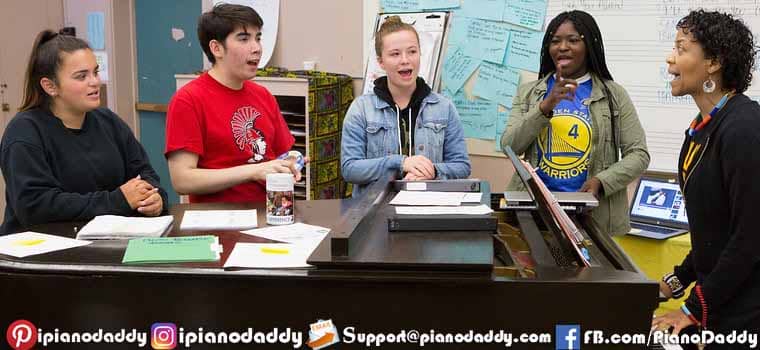Assessment In Music Education
Instructions: Sign + = Higher Octave, - = Lower Octave, # = Sharp Notes, b = Flat Notes. See Piano Theory Click Here Key Name details with diagram.
Assessment In Music Education
The task of assessing the performance of students is one area that most educators tend to have some problems handling. The whole idea of assessment seems to be an issue because it is misunderstood and the purpose isn’t well known. Answers to questions such as: what is the purpose of an assessment? Forms of available assessments are available and which is most effective? As well as Suitable assessment forms will be provided.
Two main kinds of assessment are available: the Formative and the Summative.
FORMATIVE ASSESSMENT
Formative assessment aids in monitoring the learning of the student and provide continuous feedback which can be used by the instructors to improve on their learning. This form of assessment helps students to recognize their strengths and learn about their weaknesses. Formative assessments are low stakes and are not used as the standard for assessing progress for the test, projects, grades, or homework. They are used to provide students with feedback which makes them prepared for future evaluation.
Some of the formative assessment could be:
- making students to summarize the main points of a lecture.
- submit one or two music compositions for initial feedback.
- Practice test.
- Get judged on a performance based on a performance rubric.
- The feedback was given by trainers or conductors during a private rehearsal.
The performance rubric provides a great way for assessing the performance of students because it provides a basis where students can be scored or evaluated based on overall performance other than how many things they got right or wrong. The music teacher would not be able to strike right notes or wrong notes made by a student as easily as a maths teacher would do, hence the need to have a rubric to provide a proper assessment of the student’s performance. The focus shouldn’t be on the errors made by the student, but rather on how the overall performance was affected by such errors. Here, the aim is for the performance to be enjoyable and expressive other than being note-perfect.
In Formative assessment, assignments are not graded but rather comments are made on them and returned to students for further work.
The teacher then provides the necessary support to assist the student to use the feedback in making a proper revision of the work. The formative assessment is majorly about a student getting feedback on their work, doing it again, and incorporating the feedback to produce a better job. This process helps a student to fully attain the necessary mastery of their work and produce the highest quality piece of music. Once the student’s work has been properly revised and is now in the best possible condition, then it can be assessed summatively.
SUMMATIVE ASSESSMENT
The summative assessment is used in the case when the student’s learning needs to be evaluated at the end of an instructional unit by comparing it against a standard grade or benchmark. The summative assessment has high point values. They are used as the basis in a report card, homework, test, or project work. Usually, the assessment is done at the end of a course, project, unit, or course and reflects the success of students in meeting certain criteria, goals as well as objectives of that unit, course, or semester.
No ongoing feedback is provided by the summative assessments. It provides the necessary final evaluation of the finished work of a student.
Although music teachers may provide their students with feedback to help them improve on their work as they continue to prepare for an audition. But the students would eventually either be accepted or rejected at the audition and this is a summative assessment. Both assessments are needed to get a balanced and excellent evaluation of a student.
The two assessment works hand in hand. When there has been an effective formative assessment then students can have a higher summative assessment score. This guarantees that learning is effective and students can enjoy higher success rates. When formative assessment is missing or ineffective, then it means that students will generally do poorly in summative assessments because they’ve not been well prepared and have not learned effectively enough.
These are demo notes for respective song. You can try it on your instrument. If it works for you and you are comfortable to play with our notes, you can simply get full notes by paying us. Just click the Buy Now button below and see our packages.

Hope you enjoyed our Piano Notes. Please share with your friends who wanna learn Piano Online.

